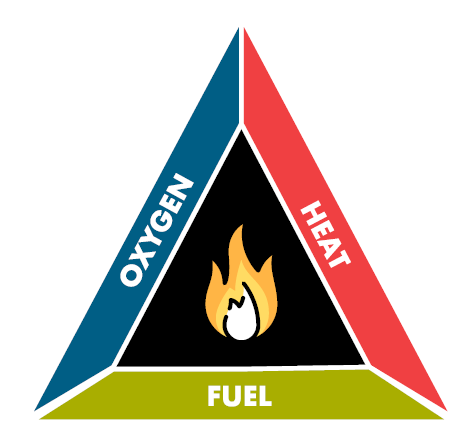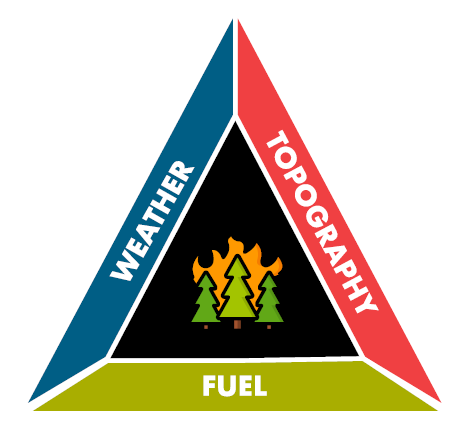News
Storm Response Across the Company
2020 is proving to be a record year for the frequency of extreme storms and natural disasters in North America. So far, over five million acres have burned in California, Washington and Oregon due to wildfires; 11 hurricanes have made landfall in the United States and a rare Derecho storm unexpectedly hit the Midwest. When disaster strikes, Wright Tree Service (WTS) personnel jump into action to clear the way for power lines. Each natural disaster has its own unique difficulties and ways to respond.
Derecho
Greg Williams, Regional Manager
On Monday, August 10, much of Iowa was impacted by a Derecho with wind speeds up to 120 mph. This caused widespread tree damage for hundreds of miles along and north of I-80. Within an hour of the event, we received calls to mobilize local and off system crews to respond to the major storm event still unfolding across the state. We were able to immediately mobilize 60 crew personnel toward the hardest hit locations to begin restoration efforts, as our management team began calling around to other utilities and divisions within WTS in the Midwest to assess available resources in close proximity to Iowa. Within 24 hours, we were able to secure resources from Kansas, Nebraska, Illinois, and Minnesota and amassed a total of 325 crew personnel assisting in restoration at the height of the storm event. The crews working on this restoration event worked in extreme heat for 16 hours, a day, for up to 19 consecutive days before returning home to rest.
Unlike other major storm events such as hurricanes, when you have days of warning leading up to the catastrophic event, these unforeseen wind storms require a quick and largely unplanned response effort. Response efforts like this emphasize the ability of an organization to quickly work together as a team and assess the needs and available resources. It requires year-round communication with our field personnel and customers to continually maintain an understanding of flexibility and preparation.
Hurricanes
Joe Partridge, Division Manager
It has been a busy year for hurricanes and tropical storms in the United States. WTS crews from across the country have helped respond to storms in the Southeast. So far this year, we have responded to five hurricanes and two tropical storms in the Southeast – and hurricane season isn’t over yet.
Generally, hurricane season begins in early June and ends in late November.
When a tropical storm or hurricane shows up on the radar, the utility company contacts us to begin preparing our response. Responding to tropical storms is different from other events because we normally have advance notice of when and where it’s likely to make landfall. However, even with the advanced notice, we have to move quickly to respond effectively. Our goal is to station crews as close as safely possible to the storms anticipated path before the storm hits so we are there to begin restoration efforts as soon as it passes. We pay close attention to the storm in case it changes its path and we have to have our crews head in a new direction.
To successfully respond to storms as an organization, we have to make sure our employees are prepared and able to work safely. Responding to storms is stressful; crews spend long periods of time away from their families and work long days. That’s why it’s important for each employee to be a Brother’s and Sister’s Keeper and look out for one another.
Wildfires
Frank Archuleta, Risk Project Manager
In 2020, wildfires have ravaged millions of acres across the Western United States, including over four million acres in California alone. Hot, dry, windy conditions, ideal for wildfire ignition and spread came early to many areas this year and have persisted into the fall. During these times of extreme fire danger, it is important that managers and work crews have the training and tools necessary to work safely on emergency clean up and routine maintenance work.
As in all other aspects of utility line clearance work, situational awareness is one of the keys to safety when dealing with wildfire hazards. Maintaining an awareness of current and changing conditions and surroundings and modifying work activities and behavior accordingly is what keeps employees safe.
In addition to maintaining situational awareness, it is important that employees working in these areas have the tools and training to identify and mitigate hazards, and to understand that some situations may occur in which there is no way to work safely.
Working safely in areas with elevated fire danger begins with understanding the potential for a wildfire ignition to occur, and the potential for spread and growth after and ignition has occurred.
Wildfire ignition is based on the wildfire ignition triangle.

HEAT, FUEL AND OXYGEN
These are the three elements that are necessary for a fire to occur.
Ignition sources (heat producing items) include things such as hot mufflers, utility power lines and sparks thrown by chainsaws.
Fuel sources are normally dry vegetation but can include anything dry enough to catch on fire including trash that has built up on the job site.
Identifying and separating ignition sources from fuel sources is the key to preventing accidental wildfire ignitions.
It is important to remember that most wildfire ignitions (around 85%) have human-related causes. This can be a carelessly thrown cigarette, a downed power line or dragging trailer safety chains that are throwing off sparks. We must be as alert for wildfire ignitions that have non-WTS related causes, as we are for those that may be started by employees during daily activities!
Wildfire spread after ignition is based on the wildfire behavior triangle.

FUEL, WEATHER AND TOPOGRAPHY
These are the elements that determine how a fire will behave after an ignition takes place: Fuels are the same as in the fire ignition triangle.
WEATHER; WIND, RELATIVE HUMIDITY AND TEMPERATURE
Wind is the greatest factor affecting wildfire spread. Strong dry winds can push a fire, dry out surrounding fuels and serve as an oxygen supply.
Relative humidity and temperature: The hotter and dryer it gets, the easier a fire can start and spread.
Terrain issues include steep slopes and narrow canyons. A 10 degree increase in slope can lead to a doubling in the rate of spread of a fire. Steep terrain makes it difficult for crews to use escape routes to quickly flee from a fire. Narrow canyons can act like chimneys and channel heat that can lead to rapid fire spread.
Identifying and documenting these conditions, identifying and mitigating ignition and fuel sources and having the tools to suppress any accidental wildfire ignitions as quickly as possible are what keeps crews safe while performing any kind of work in areas with elevated fire danger, allowing them to complete their essential roles.
The WSC Wildfire Safety and Prevention Plan is designed to give managers and employees the tools and understanding to work safely and prevent accidental wildfire ignitions in areas with elevated fire danger. Understanding and documenting the elements that make up the two fire triangles helps give us the necessary situational awareness to work safely in areas with elevated fire danger.
THE PROGRAM HAS THREE PARTS:
- The WSC Wildfire Safety and Prevention Plan
The wildfire safety and plan documents the goals of the program, the steps necessary to ensure job site safety and serves as a reference guide for employees and managers.
- Fire Briefing
The fire briefing helps crews stay safe by documenting job site wildfire conditions, ignitions and fuel sources, and the necessary fire tools needed onsite.
- Wildfire Training
Wildfire safety is ultimately based on identifying, documenting and mitigating the job site conditions that can lead to and affect job site wildfires, as well as having the proper tools and training to suppress any accidental wildfire ignitions that may occur. Training managers and crews to understand wildfire hazards helps keeps employees safe while working in areas with elevated fire danger, and allows them to complete their essential tasks.

